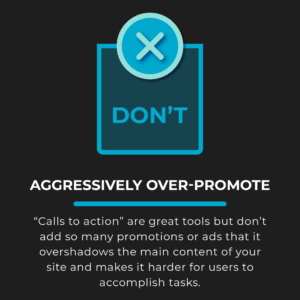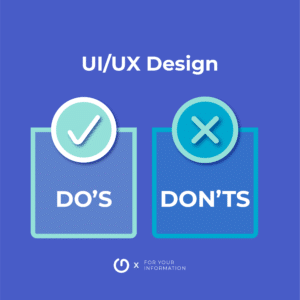
This digital presence most often starts with your website. It’s not enough to just have a website and expect success. You want your website to set the right tone from the moment someone finds it. Studies have shown you have 50 milliseconds to make a good first impression.
In order to make the impression you want, and to be effective it’s critical to have a well-thought-out user interface (UI) and user experience (UX) plan. Here are some quick UI/UX design dos and don’ts that will improve the quality and effectiveness of your website.
DO
Identify goals —
- Identify the overall goals of your website. Think about the exact purpose you want it to serve. Whether you are just providing a way for people to learn about your business, or selling products and services, it’s important to establish those targets and use them as a blueprint.
Be consistent in your designs —
- The overall look and feel should be consistent throughout the site. Maintain the same navigation placement, color schemes, and fonts for each page. This will avoid confusion or frustration as people search for information.
Create balance —
- You want the best-looking site possible, and often less is more. Avoid using lots of textures, too many colors, and too many fonts. Select decorative elements that make sense and are consistent with your brand. And keep them to a minimum. Use white space; it can be a great tool in getting your users to focus on specific content.
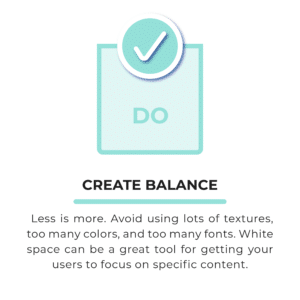
Make your website responsive —
- People now access the internet more from their smartphones than desktop computers. 85% of adults think that a company’s website should be as good or better when viewed on a mobile device than its desktop website.
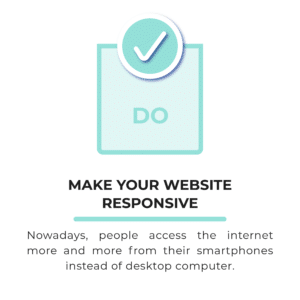
Invest in good photography and graphics —
- Good quality photos go a long way. Try to avoid using generic clip art and stock photography. Be specific and purposeful with your photos and graphics. In general, photography depicting people gets more traction than those without. Keep graphics clean and easy to understand.
Optimize your site —
- The amount of time it takes for your site to load has a huge impact on not only user experience but SEO and conversion rates as well. Resize and compress images and other large files. Only load scripts that are necessary. Limit your fonts.
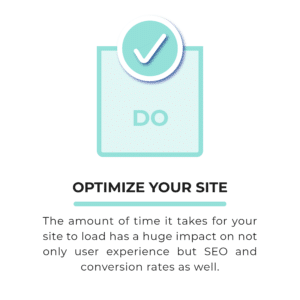
DON’T
Overload your navigation —
- Don’t overwhelm your users with too many choices. Your navigation is going to be your main source of interaction on your site. It can make or break your site usability. Make it easy for people to use. Stick to standard sections that someone would expect to find on your website. For example, About Us, Contact, Products/Services, etc.
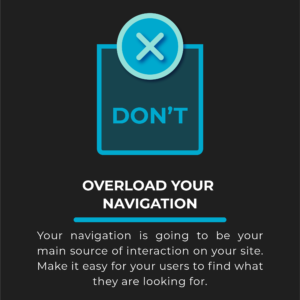
Sacrifice usability for design —
- It’s important to remember that design takes a back seat to functionality. Choose easy-to-read fonts. Avoid overcomplicating your site with decorative elements that can distract your visitors. Use calls-to-action to get your users to do exactly what you want and make all interactive elements easy to find, easy to understand, and easy to use.
Overwhelm the page —
- Don’t overload your page with large blocks of text. Break up your content into easy-to-read chunks or bullet lists. Create a hierarchy using subheadings and make it easy to scan the pages for content. People read left to right, top to bottom. Layout the content to follow that natural pattern.
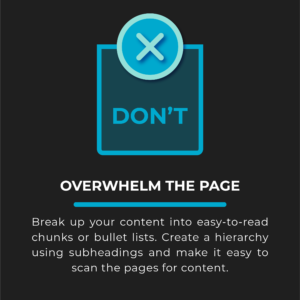
Forget that content is king —
- Your site copy is just as important as design. Be sure to have effective writing on your website. Take the time to make sure your content is clear and easy to understand. Ensure your copy is free of spelling or grammatical errors.
Aggressively over-promote —
- “Calls to action” are great tools — but don’t add so many that they overshadow the main content of your site. This can make it harder for users to accomplish tasks. Sensory overload will ultimately affect your bounce rates.
